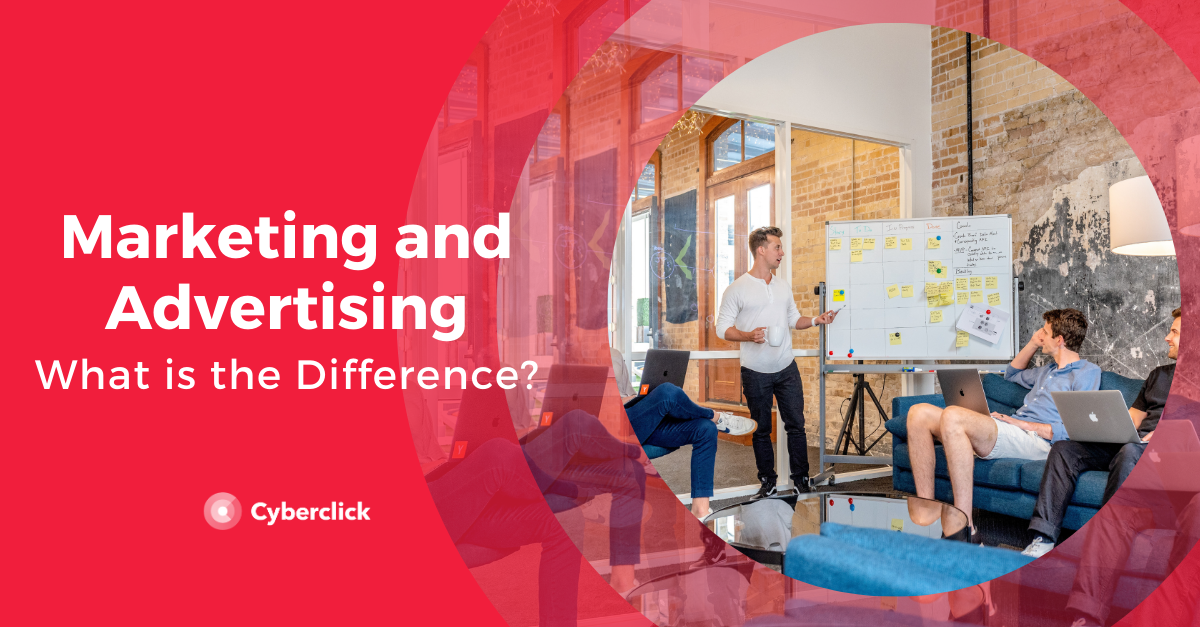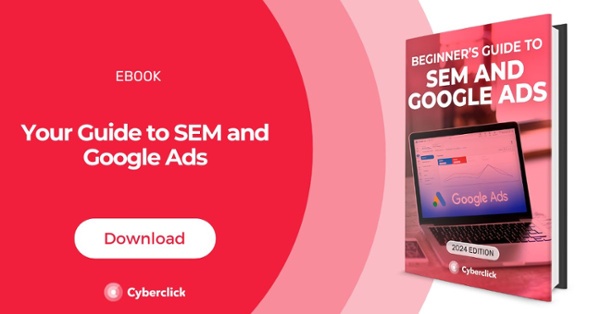By Dany Ortiz, on 28 October 2019
Marketing and Advertising are two concepts that almost everyone encounters daily in one way or another, and yet there is still confusion between the two. Are they basically the same thing, with just two different names? How are they similar and different? What tools and strategies do each use?
Understanding the difference between marketing and advertising is fundamental for the success of your company. Therefore, we’ll shed some light on the confusion and define each term, as well as explain some key concepts of each word.

What Is Marketing?
Marketing is the study of consumer and market behavior. Its main purpose is to attract and capture customers, as well as retain current customers. In short, marketing is about increasing the sales of a brand or company.
When it comes to distinguishing between marketing and advertising, you’ll find that marketing is a much broader concept than advertising. To get an idea of everything that marketing covers, let’s review the “4 P’s” that are part of the classic definition of marketing:
- Product: Product or service. Companies exist by selling products or services. Within marketing, the definition of products is more about seeing to what extent they fit the needs and desires of consumers, rather than their technical characteristics.
- Placement: Point of sale or distribution. You could have the best product in the world, but if consumers can’t access it, then it’s useless. Therefore, this “P” of marketing ensures that products and services are available to consumers by various means, whether through physical stores or e-commerce. It also deals with creating positive shopping experiences that attract users to the brand.
- Price: The price of a product is a key factor in marketing. A marketing team has to take into account several different factors in order to price a product, such as the economic objectives of the company, the perception of a product, and the expectations of the target audience.
- Promotion: This last “P” includes all the different marketing and communications actions taken to introduce and establish a positive perception of a product to consumers. As you may have figured, advertising is a huge component of this “P,” but it’s not the only one.
6 Marketing Concepts
- Online Marketing or Digital Marketing: Also known as Marketing 2.0 or cybermarketing. It has the same objective as traditional marketing, but uses new technologies and social networks to promote the company’s products or services online. Just like how we differentiate between marketing and advertising offline, we must distinguish between digital marketing and digital advertising.
- Direct Marketing: This type of marketing seeks to trigger a specific result in a specific target, such as visits to an online store or completing a form on a contact form landing page. It can have different deliveries, like traditional mail, telemarketing, point of sale, email, etc. It is one of the most effective and easy to measure methods.
- Email Marketing: This technique is based on sending emails to contacts in a database. It is one of the earliest digital marketing techniques, but it continues to deliver good results. Personalization and automation are currently two of the most popular trends trends that email marketers are using.
- Viral Marketing: Almost everyone who is on social media has encountered viral marketing, especially through the forms of viral videos. This type of marketing works to disseminate information on a very large scale via the internet, often through social media users themselves.
- Mobile Marketing: Mobile marketing includes all communication tactics used for mobile devices, like cell phones. This type of marketing has gained increased importance throughout the years due to users’ high consumption habits.
- Performance Marketing: This is a marketing technique in which the marketer only pays for the results they have obtained through the campaign. Normally, the objectives are based on concrete actions that the audience must take.
What Is Advertising?
Advertising is a form of communication aimed directly at consumers. The overall objective of advertising is to increase the consumption of a product or service, improve the image of a brand, or reposition it within the mind of the consumer. In the distinction between marketing and advertising, advertising is a part of marketing, specifically within promotional strategies.
Today, digital marketing and digital advertising are essential when it comes to promoting new products and services, even more so than traditional media.
8 Advertising Formats
- Native Advertising: This type of advertising is integrated into the content or platform where it is published, without navigation being interrupted. While it’s a good method for overcoming the challenge of ad blockers, it must bring real value to the customer in order to be an effective form of advertising.
- Email Marketing: As we mentioned, advertising is a function within marketing, so it should be no surprise that email marketing is actually an essential technique within advertising. It is a relevant concept in both fields.
- Social Ads: Ads on social networks allow brands to both reach a potential audience of millions of users, as well as precisely segment target audiences. Currently, the most popular social ads are Facebook Ads, Instagram Ads, and Twitter Ads, but other social networks such as Snapchat and Pinterest have interesting options.
- Display Advertising: Displays are any visual advertising element, like banners and pop-ups, that can be placed on web pages, portals, blogs, etc. This type of advertising is challenged by the popular use of ad-blockers, so it’s important to ensure the displays are not intrusive.
- Dynamic Retargeting: This technique takes display advertising one step further by displaying custom ads based on users' previous behavior. This is done by collecting information about users through cookies.
- SEM: SEM campaigns are based on publishing ads in search engines, like Google. The ads are then shown to the user based on what they’re searching for. It is essential to properly target the keywords and to have a great landing page for SEM to be successful.
- Mobile Ads: Today virtually all online ads must be designed for mobile devices, since its where users spend most of their time browsing.
- Online Video: Video is highly effective due to its ability to easily convey ideas and emotions. It generates higher CTRs than traditional digital advertising and has great virality potential.
As you can see, while they may share many similarities, advertising is a function within marketing. One cannot not wholly exist without the other. We hope we’ve cleared up the difference between marketing and advertising. Let us know what you think!



